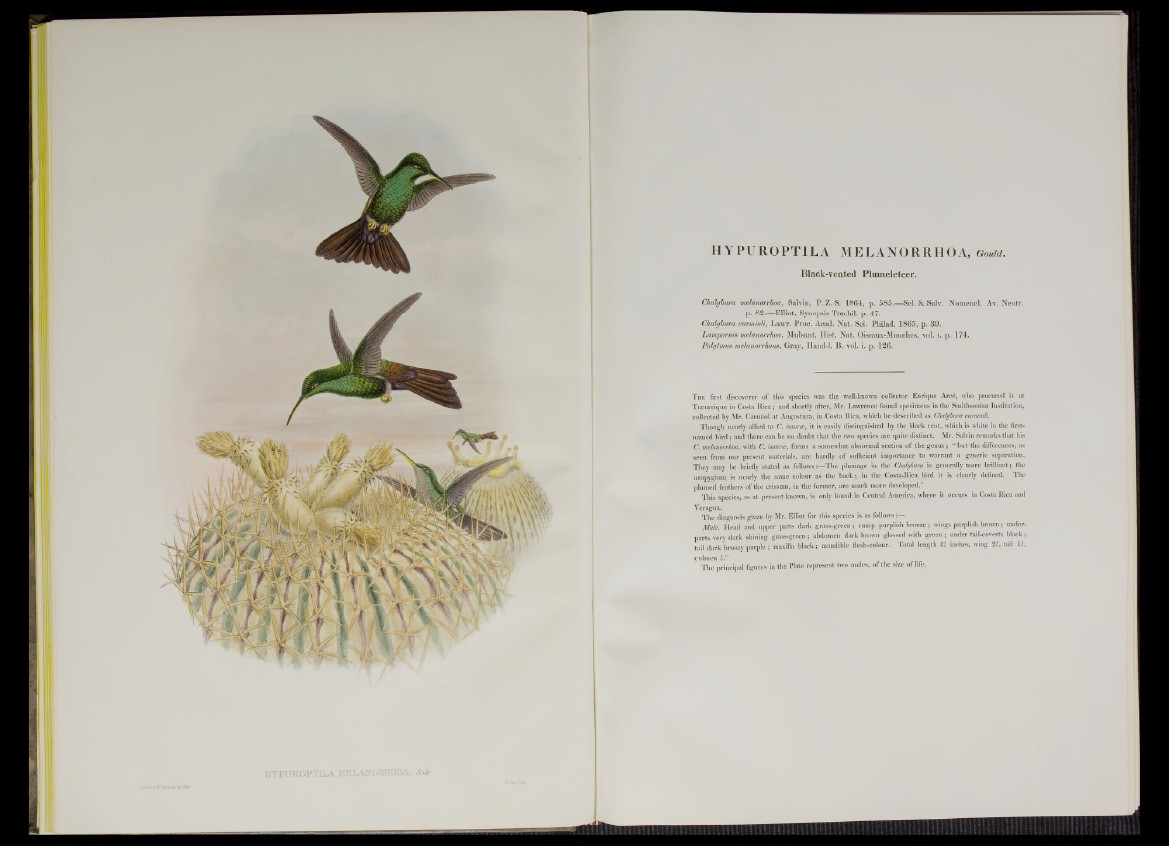
i r S T P Ü R O P T U A M E L A N 'O H R H Q A , S a b '.
HYPUROPTILA MELANORRHOA, Gould.
Black-vented Plumeleteer.
Chalybura vnelanorrlioa, Salvin, P . Z. S. 1864, p. 5 8 5 .— Sel. & Salv. Nomencl. Av. Neotr.
p. 8 2 .— Elliot, Synopsis Trochil. p. 47 .
Chalybura carmioli, Lawr. Proc. Acad. Nat. Sci. Philad. 1 8 6 5 , p. 3 9 .
Lampornis melanorrhoa, Mulsant, Ilis t. Nat. Oiseaux-Mouches, vol. i. p. 174.
Polytmus melanonhous, Gray, Hand-1. B. vol. i. p. 126.
T he first discoverer o f this species was the well-known collector Enrique Arce, who procured it at
Tucurrique in Costa Rica; and shortly after, Mr. Lawrence found specimens in the Smithsonian Institution,
collected by Mr. Carmiol at Angostura, in Costa Rica, which he described as Chalybura carmioli.
Though nearly allied to C. ¡source, it is easily distinguished by the black vent, which is white in the first-
named bird; and there can be no doubt that the two species are quite distinct. Mr. Salvin remarks that his
C. melanorrlioa, with C. isaurce, forms a somewhat abnormal section o f the genus; “ but the differences, as
seen from our present materials, are hardly of sufficient importance to warrant a generic separation.
They may be briefly stated as follows:—The plumage in the Chalybura is generally more brilliant; the
uropvgium is nearly the same colour as the back j in the Costa-Rica bird it is clearly defined. The
plumed feathers of the crissum, in the former, are much more developed.”
This species, as at present known, is only found in Central America, where it occurs in Costa Rica and
Veragua.
The diagnosis given by Mr. Elliot for this species is as follows:—
Male. Head and upper parts dark grass-green; rump purplish bronze; wings purplish brown; underparts
very dark shining grass-green ; abdomen dark brown glossed with green ; under tail-coverts black;
tail dark bronzy purple ; maxilla black; mandible flesh-colour. Total length 4 f inches, wing 21, tail 11,
cnlmen i."
The principal figures in the Plate represent two males, o f the size o f life.